Exactly like Marvel Comics #1, this book marks the debut of three superheroes. But we’ll concentrate on the title character only for now.
Flash Comics #1 (1940)
by Gardner Fox & Harry Lampert
It should be noted that it’s quite unusual for a superhero to debut in his own series instead of an anthology book. This has a cover date of January 1940 and superheroes were already quite popular (we’ll see that A TON of heroes debut in 1940), but throughout the Golden Age very few characters have the distinction of starting out on a series carrying their name.
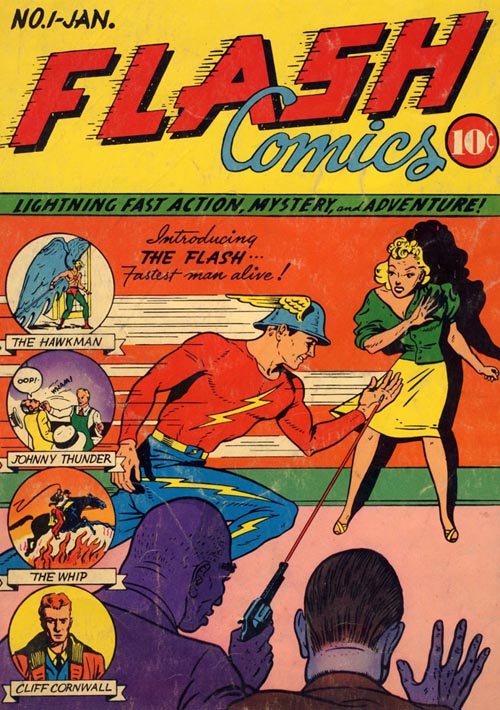
Garner Fox is the master of superhero sobriquets, but I guess it’ll take him some time to develop his craft because “ the joy of the oppressed” is a little to similar to Superman’s “champion of the oppressed”. And I have no idea WTF “the open mouthed wonder of the multitudes” is even supposed to mean.
“Fleeter than the rapidity of thought”, on the other hand, is AWESOME.
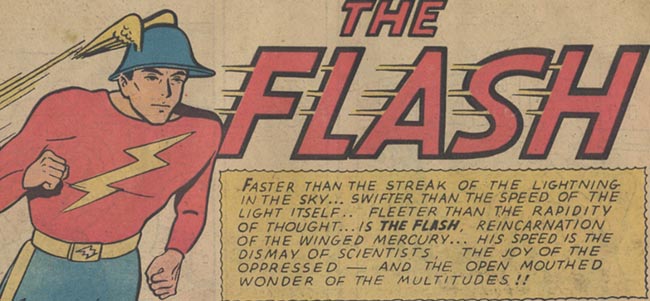
The Flash is also the first superhero to start out as a bit of a loser in his civilian identity, at least if we go by the opinion that his crush Joan and his teammates have of him.
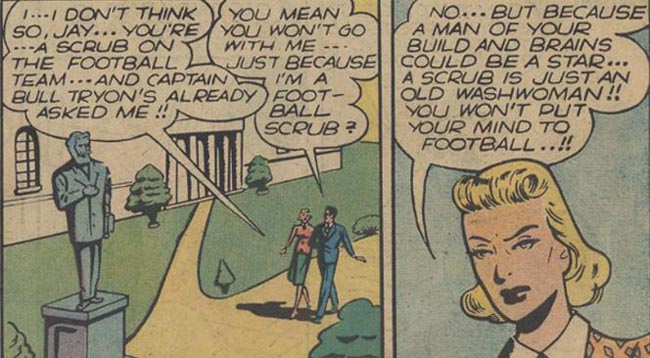
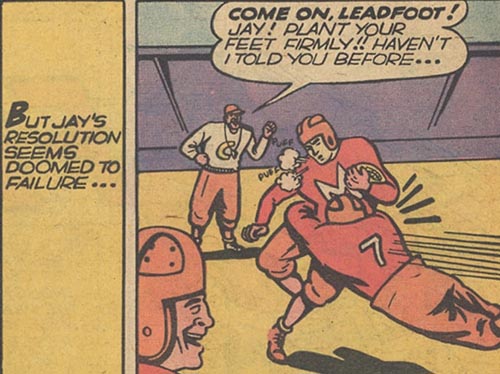
We then see Jay Garrick working an experiment with “hard water”.
The modern use of the term simply refers to water that has high mineral content. Modern retellings change this to the slightly less mundane heavy water, which is water that contains hydrogen isotopes. It’s quite possible that the two terms were interchangeable back in the day.
Neither one makes ANY sense in the story.
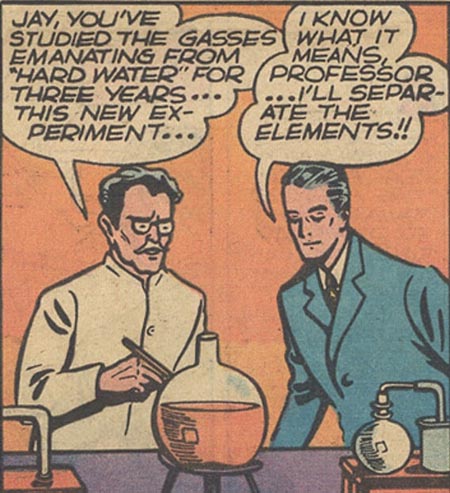
Okay I get that EVERYONE smoked in the 40s, but… in the lab!? Even if there’s nothing to catch fire or explode there, I sincerely hope scientists took things slightly more seriously.

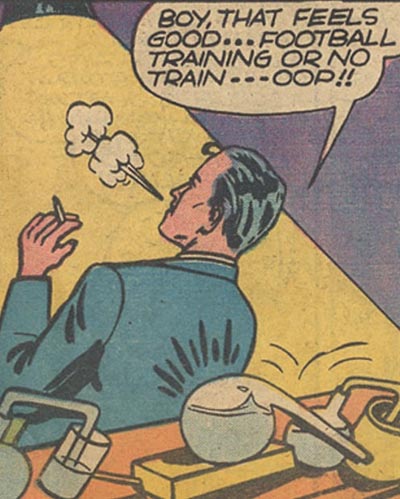
And that, kids, is why smoking is bad for you. And leaning against a table full of chemicals.
(WTF, Jay!?)
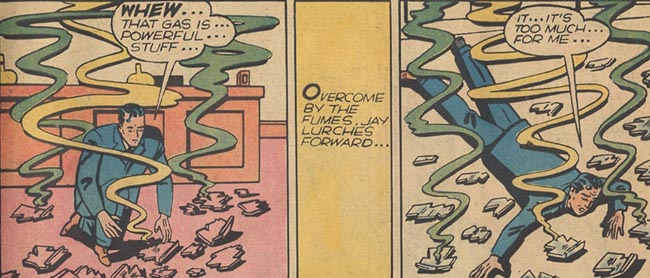
With all the talk about hard water, I’m starting to think it was just used as a generic term because it’s acting nothing like either hard water or heavy water.
This wouldn’t be surprising for the Golden Age, but I’m used to Garner Fox to use actual science in his stories. So either I’m missing something or he didn’t start doing that until later.
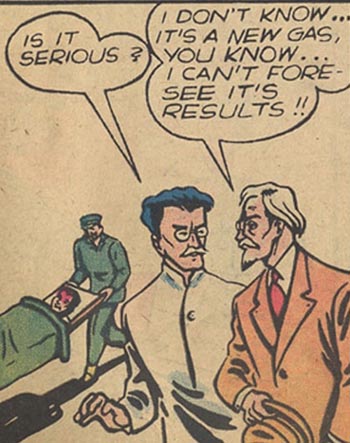
Ah yes, inhaling vapors is exactly like being injected with a vaccine.
Assuming you don’t know what any of those words mean.

Now I see what are the dreadful effects of hard water. It destroys your taste buds so much that even hospital food tastes great.
He’s a freak indeed!
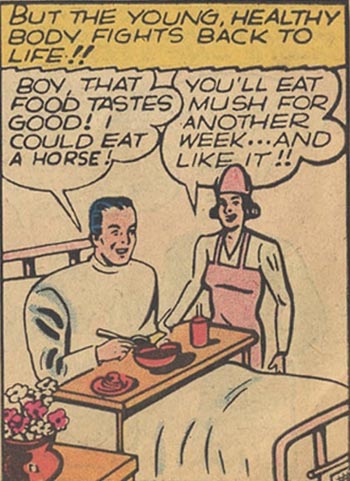
On the upside, he’s fast enough to make everyone forget they saw a speedster.
Seriously, Jay keeps his secret identity after this… HOW!?
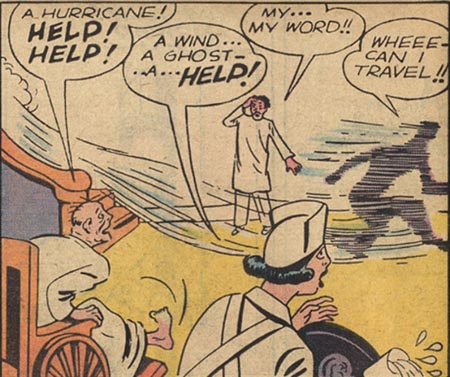
After recovering from inhaling strange vapors and discovering he has super-speed, the first thing Jay Garrick does… is returning a book to the library.
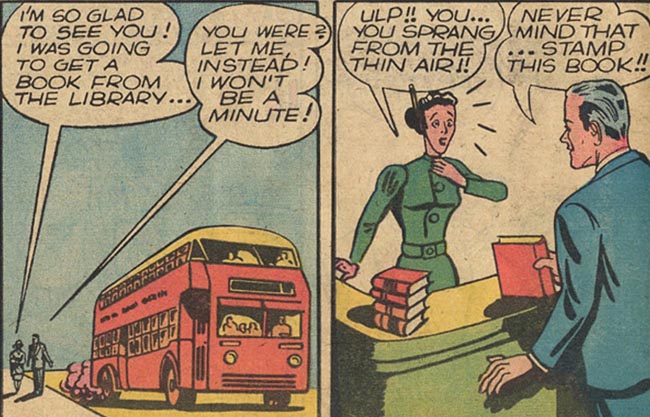
The second thing is traumatizing civilians.
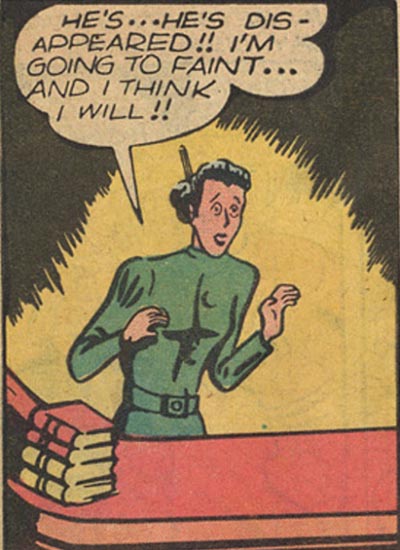
You just have to love how Golden Age characters are able to shake off incredible things within the span of a single sentence.
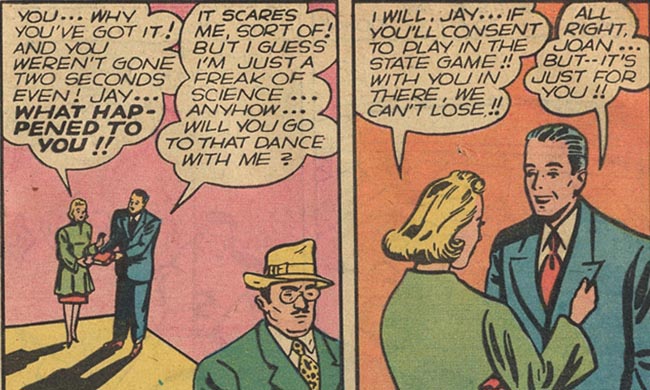
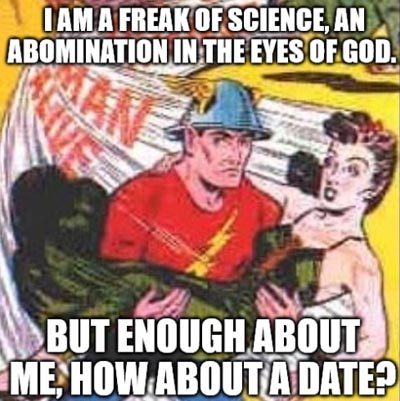
This is a sports comic now.
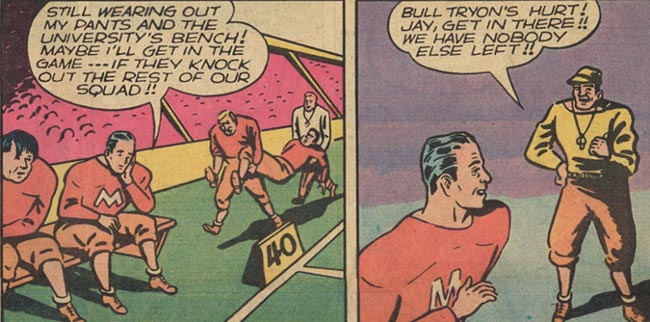
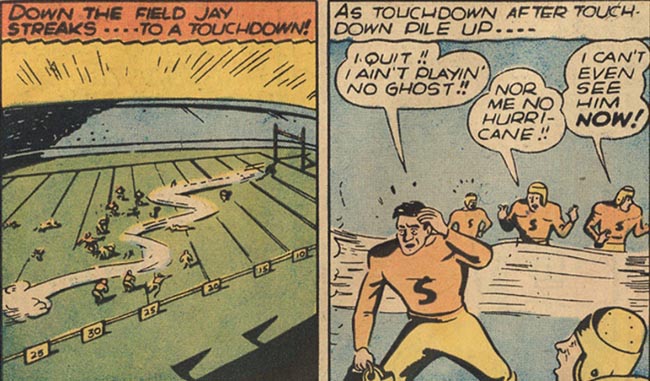
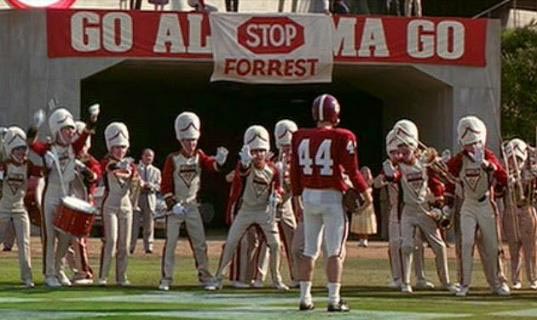
Having superpowers is cool and all, but Joan only starts to like Jay once he wins the football game. Told you this is a sports comic now!
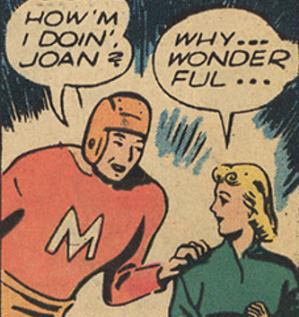
And then they go on with their lives as if nothing happened! BE IMPRESSED, DAMMIT!!!
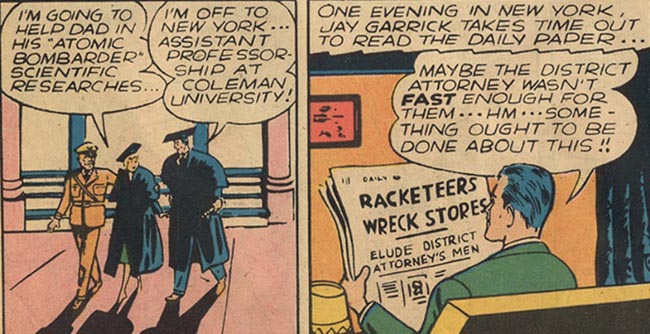

Quite fittingly, the Flash solves his very first case in TWO PANELS.
I’m not kidding, this is THE ENTIRETY of the first crime he stops:

And what happens NEXT PANEL? He goes on to play tennis!And you thought I was kidding when I said this is a sports comic now.
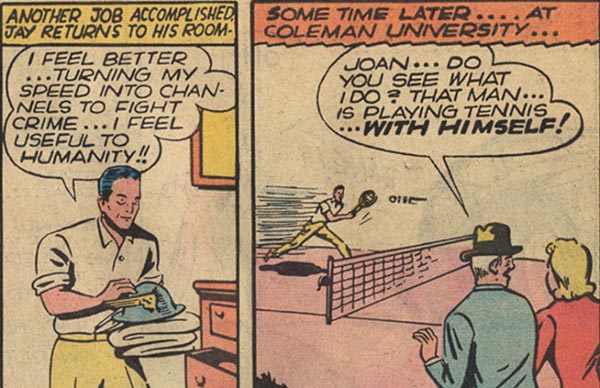
I mean it does make a bit of sense… there are no supervillains yet, so of course he’s going to solve any crime in 0.0000000000001 nanoseconds and then find a hobby.

He then saves Joan from an assassination attempt…
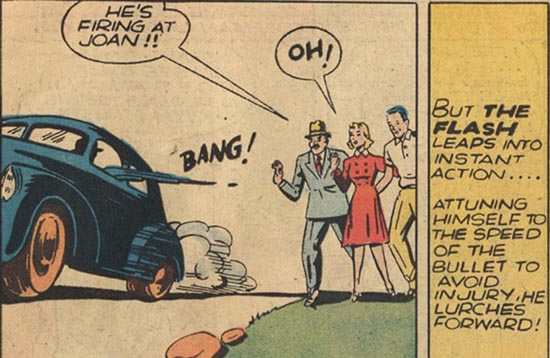
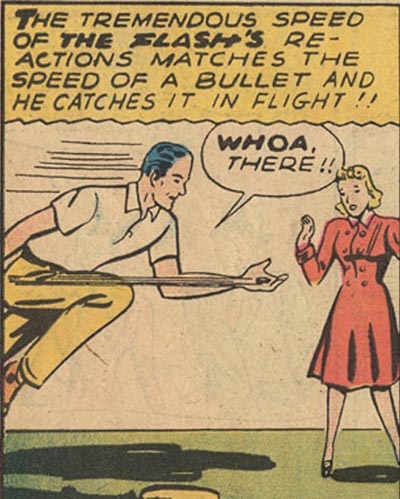
…but nobody told her would-be assassins.
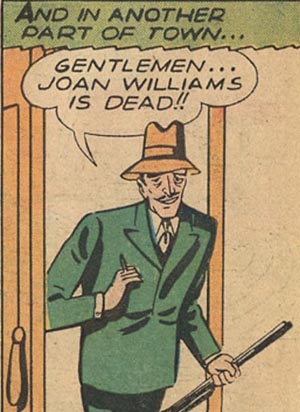
Why would anyone want to kill Joan? It’s rather convoluted!
Her father is a an Army Major, so master criminal Sieur Satan (yes, REALLY) wants to get some secret information. Okay, standard stuff for the Golden Age.
But instead of just kidnapping his daughter, they shoot her in order to have a corrupted surgeon save her life ONLY if the Major talks.
If that was the plan, why did they immediately leave after shooting Joan!?
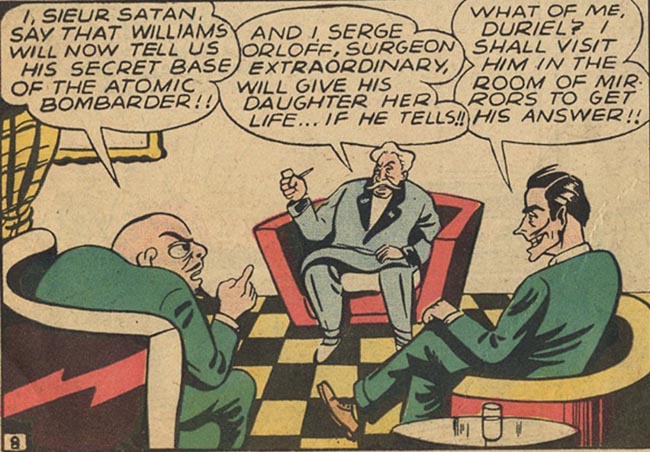
Only to then say they never intended to save Joan in the first place, sending one of the goons to take her corpse and use it to taunt the Major (!!!).
So what was even the point of the corrupted surgeon!?

The Flash might be the fastest man alive, but this guy is the slowest. In the head.
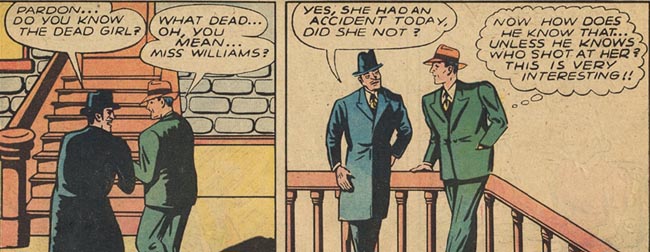
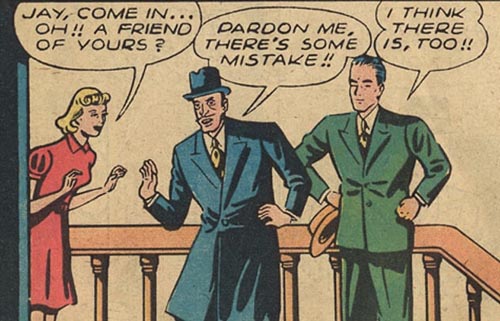
Jay lets him go (???) and Joan reveals what’s going on.
Is it just me, or is “the Faultless Four” the lamest possible name for a gang?

0.0000000000001 nanoseconds later, Flash finds them.
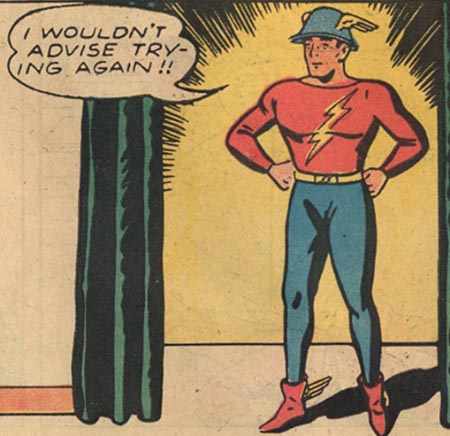
See what I told you about Gardner Fox trying to put some science into things? He didn’t HAVE to include the technical explanation, and it’s a little verbose, but it’s a neat gimmick.
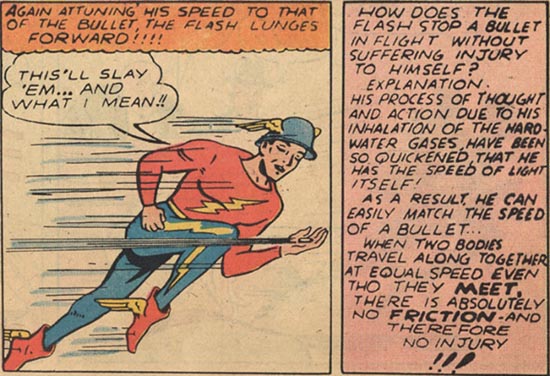

He then rescues Joan’s father and, again, doesn’t even try capturing the criminals.

It should be noted that Joan’s father doesn’t learn Flash’s secret identity, SOMEHOW, despite knowing Jay Garrick.

Dude, they shot at you. They shot at your girlfriend. They kidnapped her father and HE SAW THEIR FACES. Why aren’t you capturing them already!?

I mean letting them go so that they can SHOOT AT RANDOM CIVILIANS AT THE BEACH isn’t the best strategy…
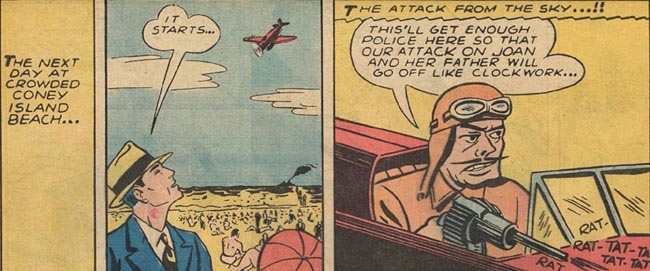
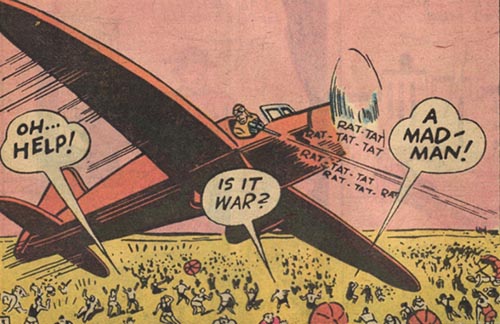
…even if you can catch ALL the bullets.

He FINALLY decides to do something by going to their apartment. So of course at this point they have a trap ready for him.
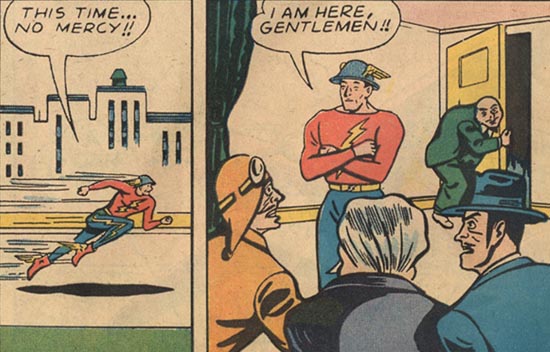
It doesn’t work, AT ALL, but instead Sieur Satan ELECTROCUTES HIS OWN MEN.
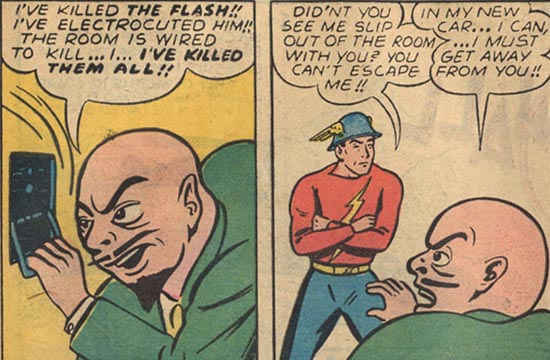
Flash lets him go (???) so that he can drive his car off a cliff (!!!) and die.
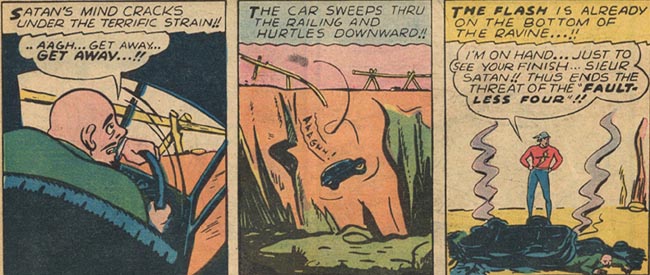
And so we end with Flash SOMEHOW still having a secret identity.
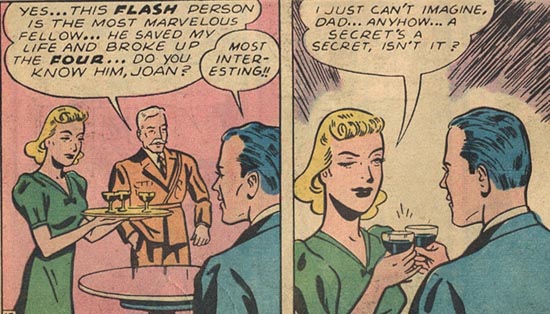
We will encounter Gardner Fox again MANY times, considering the sheer number of heroes he introduced. But the Flash’s co-creator Harry Lampert is not that well-known.
He will only draw the first two Flash stories (!!!), after which he moved to more humorous works; his style probably matched those stories better.
As for his involvement in the Flash’s creation:
The idea of the Flash was Gardner Fox’s idea… it was supposed to be based upon the god Mercury… I went into the dictionary and there’s the most beautiful rendition of Mercury and then I took my Flash and superimposed them together and they were almost identical, the pose is the same except a few doodads, and as I did it, I kept it as close as possible to that graceful attitude.
Harry Lampert
Lampert had an eclectic career: he started out as a cartoonist for Fleischer Studios when he was just 16 years old, working on Popeye and Betty Boop cartoons. After comics he went on to drawing gag cartoons (for Time, The New York Times, Esquire, and The Saturday Evening Post), become an instructor at the New York City School of Visual Arts, founded the advertising company, and finally retiring in 1976.
You would think that would be the end of his career, and it was in the sense that he started a completely different one: writing instructional books about bridge (!!!), going so far as giving classes on cruise ships on how to play bridge.
And THEN in the 90s he started selling sketches and autographs, after people remembered he co-created Flash, something he kept doing until he died in 2004 at the age of 88.
Historical significance: 8/10
First speedster superhero, and the easily the oldest active Golden Age hero if we don’t count those that have been retconned, rejuvenated, frozen in ice or that are immortal.
Silver Age-ness: 10/10
Jay’s secret identity makes Clark Kent’s glasses look like the best disguise ever.
Does it stand the test of time? 3/10
Very much a product of its time. It mostly spends time playing with the concepts of super-speed; granted this had little to no precedent, but it’s very light on substance.
Flash is having so much fun that it brings you to smile, but despite the length (15 pages is A LOT for the Golden Age!) not a whole lot happens.
How close is this to the modern character? 4/10
Flash Comics lasted a whopping 104 issues, all the way up to 1949, with Jay Garrick having a story in ALL of them. He may not have risen to the same popularity of Superman and Batman… possibly because superspeed was not yet feasible for live action… he was one of the longest lasting Golden Age heroes.
Jay won’t stay away from comics for too long; Gardner Fox himself will bring him back in 1961, in the famous “Flash of two worlds” story.
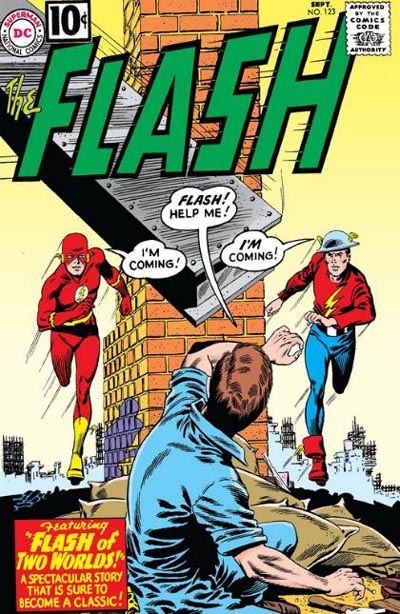
And he’s been a constant in the Flash books ever since. He’s been a mentor to Barry Allen, Wally West, Bart Allen and I’m probably forgetting a couple speedsters, not to mention a bedrock of the Justice Society.
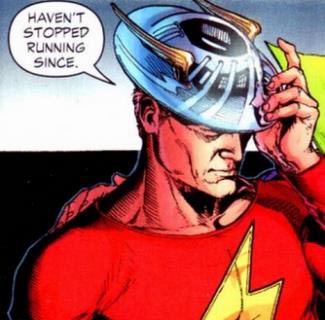
He’s still around, still getting comics and adaptations all the time, even if everyone finds the hat a bit silly.
At this point he’s well established as being Cool Superhero Grampa.
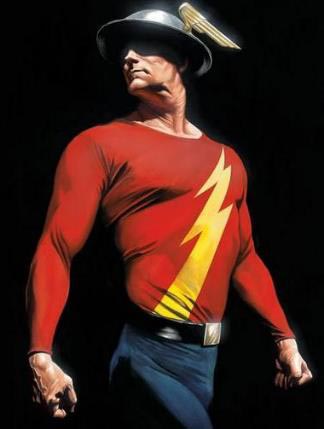

I believe that it gets established later on that the Flash shielded his identity by vibrating his face whenever in public so bystanders could only see or photograph a blur.
Eventually, he drops the secret ID altogether.
One FLASH story, some of Mark Millar’s earliest comics work, was focused entirely on a day in Jay Garrick’s life, and it’s a thoughtful treatment on what a life with super-speed is like. For example, Jay speaks almost every language on Earth fluently since whenever he encounters a new one, he takes half an hour out of his day to learn it.
I think “the open mouthed wonder of the multitudes” means that people are in sheer awe of him. The multitude is a synonym of “the masses” or common people, and here “open mouthed wonder” means a wonder that leaves you with an open mouth. ‘Open mouthed’ is used as an adjective in a way to ‘wonder’.